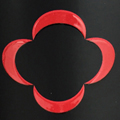Adega Regional de Colares
by
Terry Sullivan
 Summary: An old cellar filled with casks age wines from the growers in the Colares wine region. Visitors can taste the wines amid the casks and discover the uniqueness of this wine region driven by sand and clay.
Summary: An old cellar filled with casks age wines from the growers in the Colares wine region. Visitors can taste the wines amid the casks and discover the uniqueness of this wine region driven by sand and clay.
Adega Regional de Colares is a cooperative cellar that is owned by the growers. It was founded in 1931, making it the oldest cooperative in Portugal. We visited the cellar building that was built in the late 19th century. The building was always used as a wine cellar. We met winemaker Francisco Figueiredo who spoke about the Colares demarcated region. This region received the DO status in 1908. The wine region is the western most wine region in Europe and the smallest wine region in Portugal. This is an old wine region where grapes have been cultivated since the time of the Romans.
Both Francisco’s father and grandfather made wine. He decided to study viticulture for his first degree and added winemaking for a second degree. In 1999 he began working in the present cellar building.
Grapevines in Sand
 We learned about the challenges of growing grapes in the sand in Coleras. Growers not only have to contend with sand, they have to cope with high humidity, less sunlight and strong, salty, northerly winds. Using traditional grapes trellising systems do not work in this environment. The grapes do not achieve ripeness. Instead, for over a century, grape growers in the sandy region lay the canes flat along the ground. They will prop up the canes using about one foot tall sticks so that the grape bunches are slightly above the sand. This allows some wind movement under the grapes and the grapes benefit from the warmth of the sand. Using this old technique, growers can get the grapes ripe. The two main grape varieties that grow in this sandy region, Malvasia Coleras and Ramisco, seem well adapted for this type of laying on ground system. These grape varieties are also unique due to the fact that they are planted on their own rootstock rather than needing to be grafted onto Phylloxera resistant rootstock. The Phylloxera insects cannot survive in sandy soils.
We learned about the challenges of growing grapes in the sand in Coleras. Growers not only have to contend with sand, they have to cope with high humidity, less sunlight and strong, salty, northerly winds. Using traditional grapes trellising systems do not work in this environment. The grapes do not achieve ripeness. Instead, for over a century, grape growers in the sandy region lay the canes flat along the ground. They will prop up the canes using about one foot tall sticks so that the grape bunches are slightly above the sand. This allows some wind movement under the grapes and the grapes benefit from the warmth of the sand. Using this old technique, growers can get the grapes ripe. The two main grape varieties that grow in this sandy region, Malvasia Coleras and Ramisco, seem well adapted for this type of laying on ground system. These grape varieties are also unique due to the fact that they are planted on their own rootstock rather than needing to be grafted onto Phylloxera resistant rootstock. The Phylloxera insects cannot survive in sandy soils.
Francisco explained the system for planting grapevines in sand. A trench is dug out, sometimes only a few inches deep at other times up to several feet deep. Under the sand is clay. The roots of the vines are planted into the clay. As the vines grow, sand is filled into the trench. During harvest, grape pickers harvest the grapes in a kneeling position. In Coleras the area comprising the sand is not very wide, only a few kilometers from the Atlantic Ocean. Beyond the couple kilometers, the soil changes to clay without the sand. Only wines made from grapes grown in the sand may have the Colares DOC mentioned on the bottle. Wines made from grapes grown in the clay may use the larger demarcated region Lisbona.
 The Cellar
The Cellar
The cellar is a long building with wood casks lining the two lengthy walls. The casks could hold different quantities of wine. Some had the capacity of over 10,000 liters while others were in the 7,000 liter range. The casks were not made of oak, several had mahogany heads. Other wood for the barrels came from Brazil. The barrels are neutral, not parting flavors to the wines.
The room is long. Placed alongside every fifth barrel is a candelabra holding several candles on different levels. These candles give an elegance to the room and also represent a past era. Our wine tasting was set up in an area between the two rows of wood casks.
Wine Tasting
We tasted four wines, a white and red wine grown in sandy soil and a white and red wine grown in clay soil. These wines could be compared and contrasted.
 The white wine grown in the sandy soil was the 2015 Arena Malvasia, Colares DOC. The yellow colored wine was floral offering a bouquet of different flowers. The taste also exhibited flowers as did the finish. Also on the finish I noticed salt. This is a unique tasting experience as very few wines exhibit salt. The wine was 12% alcohol.
The white wine grown in the sandy soil was the 2015 Arena Malvasia, Colares DOC. The yellow colored wine was floral offering a bouquet of different flowers. The taste also exhibited flowers as did the finish. Also on the finish I noticed salt. This is a unique tasting experience as very few wines exhibit salt. The wine was 12% alcohol.
In contrast, the white wine made with grapes grown in clay was the 2016 Chão Rijo, Vinho Regional Lisbona. This wine was a blend of Malvasia, Galego Dourado, Jampal and Fernäo Pires. The yellow colored wine was fermented in stainless steel and aged in oak for four months. Flowers and tropical fruits were noticed on the aroma. The taste was reminiscent of yellow stone fruit, a hint of pineapple and daisies. The finish was crisp.
For the red wines, the one grown in sandy soils was 2009 Arenae Ramisco, Colares DOC. This ruby colored wine was barely opaque and had 12.5% alcohol. It was aged for five years in the cellar's large vats. The aroma reminded me of perfume. Black raspberries were noticed on the taste along with herbs and salt. The wine was full-bodied and had bold tannins. The finish was fruity.
The wine made from grapes grown in clay was the Ghão Rijo, Vinho Regional Lisbona. The wine was a blend of Castelão and Tinta Roriz. This wine was an opaque dark ruby color. The aroma was very fruity. The taste offered blueberry and black raspberry. The wine was full-bodied and had bold tannins. The finish was fruity with the fruit yielding to spices.
The cellars are open Monday through Friday from 9:00 am until 1:00 pm and again from 2:00 pm until 6:00 pm. On Saturdays the cellars are open from 9:00 am until 1:00 pm. They are closed on Sundays.
Enjoy a visit to Adega Regional de Colares and experience wines from the Colares region crafted with grapes grown in sand and clay.
Adega Regional de Colares, CRL
Alameda Coronel Linhares de Lima, nº 32
2705-351 Colares
Article written March 2018.
Please support the following.
 |
||||
|
Portugal |
Spain and Portugal |
SmoothRed London, England, United Kingdom |

